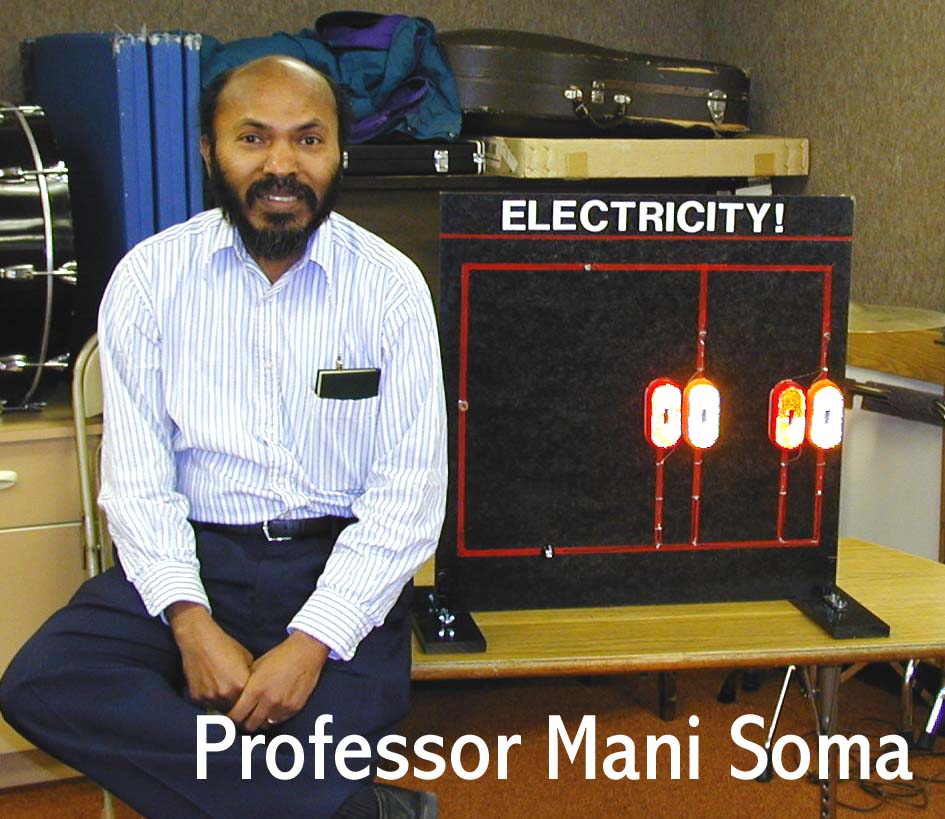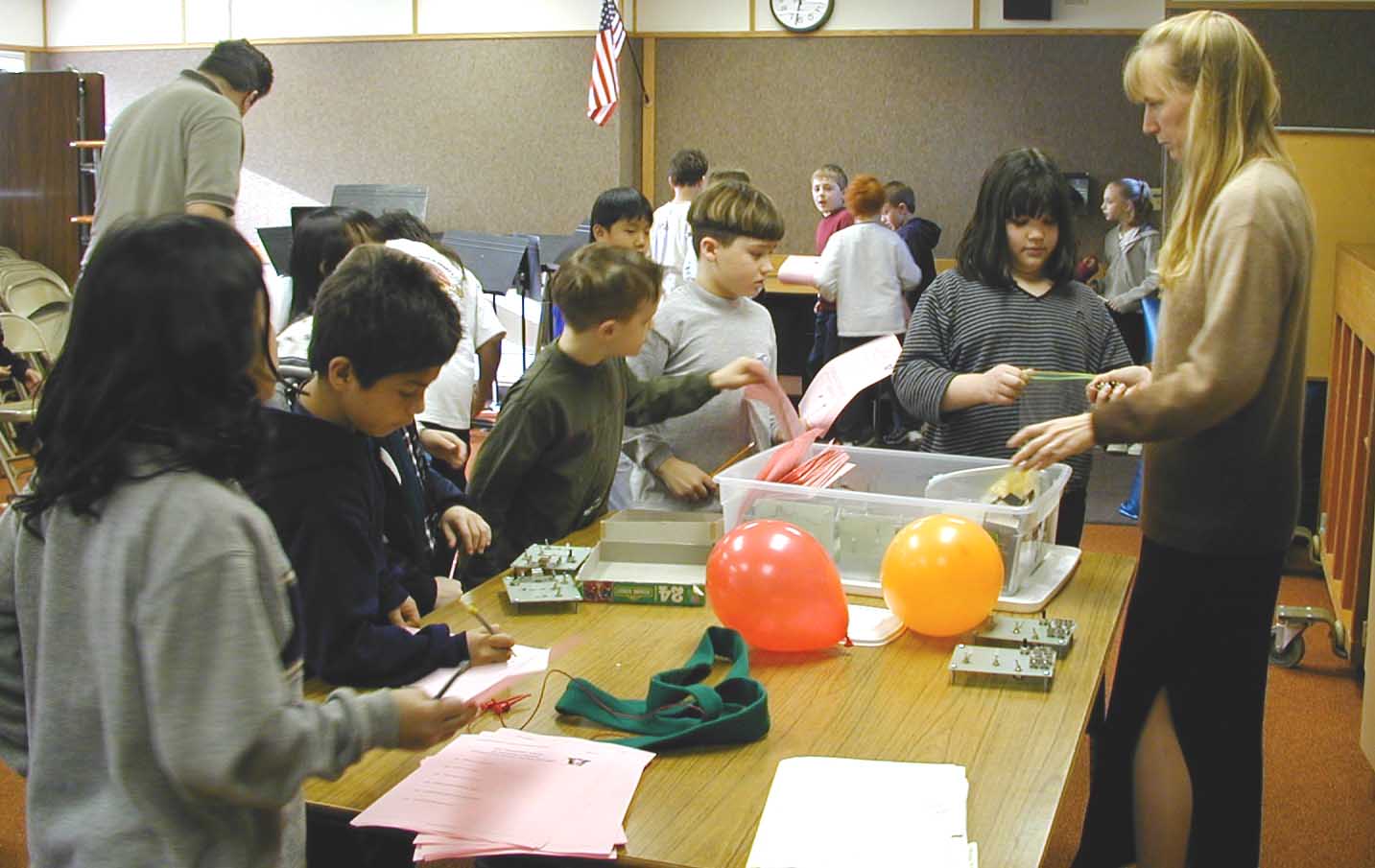

SpringBrook Elementary
Kent, Washington





For more information,
Please contact:
Denise Wilson
Assistant Professor
206-221-5238
M222 EE/CSE Bldg.
Box 352500
University of Washington
Seattle, WA 98195
wilson@ee.washington.edu
At the University of Washington
Department of Electrical Engineering
Elementary Science for Elementary Students (ES Squared) is a
community outreach program to K-6 grade levels in Washington State.
The purpose of our program is to explore the fundamentals of
electricity and to bridge the gap between biological and physical
sciences in an informative and hands-on set of learning and training
activities
Highlights of 2002 Activities
Learning Activities and Demonstrations:
Electricity Made Simple:
This demonstration is about moving
electricity (current) that is caused by
a force called voltage. Basic concepts in current, voltage, resistance
and series/parallel combinations are explored. The difference between
useful (moving) and non-useful (static) electricity is explained.
Students are provided with sample breadboards for exploring circuits and
circuit components.
How Computers Make Decisions:
What is a computer? What is inside a computer? The most widely available
computer is in every household in the world. But how is this analog
computer, the human brain, different from the personal computer? Basic
differences between how people (analog computers) and personal computers
(digital) make decisions are explained. The two states of a digital
computer (0,1) are used to make simple decisions relating to practical
situations. Students experiment with basic logic gates (computer chips)
for making binary decisions
From Vision to Cameras:
Why are videophones so slow? Why can we see faster objects better than
slower ones? Basic operation of the human eye is explained followed by
basic operation of similar artificial systems (cameras). Optical
illusions of the human eye are presented and explained as are similar
idiosyncrasies of various video systems. Students work in small groups
evaluating optical illusions and artificial light sensors.
From Hearing to Microphones:
What is sound? What does it look like? Can we touch sound? How do we
hear it? Basic operation of the human ear and characteristics of sound
are reviewed in relation to hearing. Sound is demonstrated as a pressure
wave using visual aids and a speaker operating at very low frequencies.
Biological (ear, vocal cords) and artificial sound systems (speakers,
microphones) are compared. Students experiment with comparing the effects
of sound on their ears to similar effects on artificial systems. Students
evaluate which system is better for hearing different sounds.
From Smell to Smoke Alarms:
How do we detect odors in the atmosphere? How does a smoke alarm
understand a fire? How can a smoke alarm understand a burning house vs. a
burning dinner? These questions are explored in a basic introduction to
the olfactory system (nose) and the corresponding chemical sensors in
artificial systems. Students compare the response of their noses to the
response of artificial sensors to different odors.
What is it?
This is a hands-on, free thinking exercise intended to allow students to
observe and disassemble or examine household items (cameras, disk drives,
etc.) to estimate their function and methods of operation.